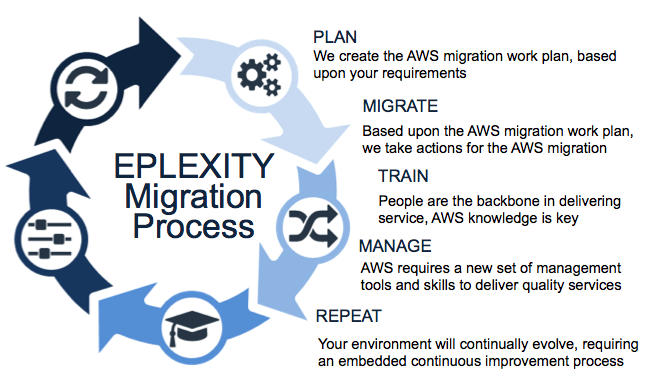AWS MIGRATION PRACTICE
Linkyoyo, Migration Delivery Partners, help customers through every stage of migration, accelerating results by providing personnel, tools, and education in the form of professional services. We leverage the AWS Cloud Adoption Framework (CAF) as our standard, ensuring our clients – along with their business and technology stakeholders – are provided guidance throughout all stages of the migration.

The issue is that there are many ways to migrate applications to AWS, each with its own tradeoffs. As enterprises begin the migration, it’s helpful to consider these tradeoffs, and take a look at important best practices.
The first best practice you should keep in mind is security and governance before the migration. In many instances, the migration team doesn’t consider security and governance until the applications are already deployed. Retrofitted security and governance solutions are typically less effective and more costly than if the issues were addressed at the front-end of the project.
The second best practice is to consider the migration strategy for each application. While many think that there is only one way to move an application to AWS, there are actually many. These approaches include:
Hybrid modifies some of the application code, but not all, specifically for AWS. You pick and choose what subsystems should be cloud native, and thus avoid a major gutting of the application. This removes some costs and risk, and provides enough cloud native functionality to be useful. Lift-and-shift just takes the application from a traditional platform and dropping it on AWS. This typically requires very little modification to the application, and thus is the least costly. However, you’re not taking advantage of the “cloud native” features, and thus the application may not perform as well as it could, or be more cost efficient in platform utilization.
Cloud native modifies the application to take advantage of the native features of AWS. This requires an investment in development, testing, and deployment time. However, the application should perform much better in AWS, as well as have a much smaller bill at the end of the month. Of course, if you localize the application for AWS, you’re giving up some portability.
So when we begin the migration, we should consider the application architecture first, and thus select the right AWS platform services and different approaches that we mentioned above. AWS has a huge menu of services, and many ways to do the same things. However, there is only one path that’s optimal for your specific application, and the trick is to find that path. Evaluate compute and storage services, as well as database, management, monitoring, and security. In many instances, you should begin with security. It might be last on the list, but it’s clearly the most important.
Don’t do an adequate job planning the initial route to AWS migration. Do a great job. It will likely be your migration path to AWS for years to come. While many enterprises try to define their own best practices, I would urge you to learn all you can from emerging industry best practices, which are typically built upon the mistakes of others. Don’t be that person who keeps recreating the wrong wheel. Managed AWS services can be especially useful in speeding this process.
If you need any help that begin the migration of AWS, let me know support@linkyoyo.com
Commonly, high-calculation-consuming companies (such as simulation design, hydrology, and meteorology) pay a lot of money for computing. If you build or lease a DC, the initial investment is too high. And if those companies use cloud computing, the monthly fee will also make them headaches. In this case, Linkyoyo provides a high-performance simulation computing solution — ESO. It helps these high-calculation-consuming enterprises can reduce the monthly fee on cloud computing more than 50% and zero investment of initialization input. Help companies easily face IT costs.
Know more about ESO, mail to support@linkyoyo.com